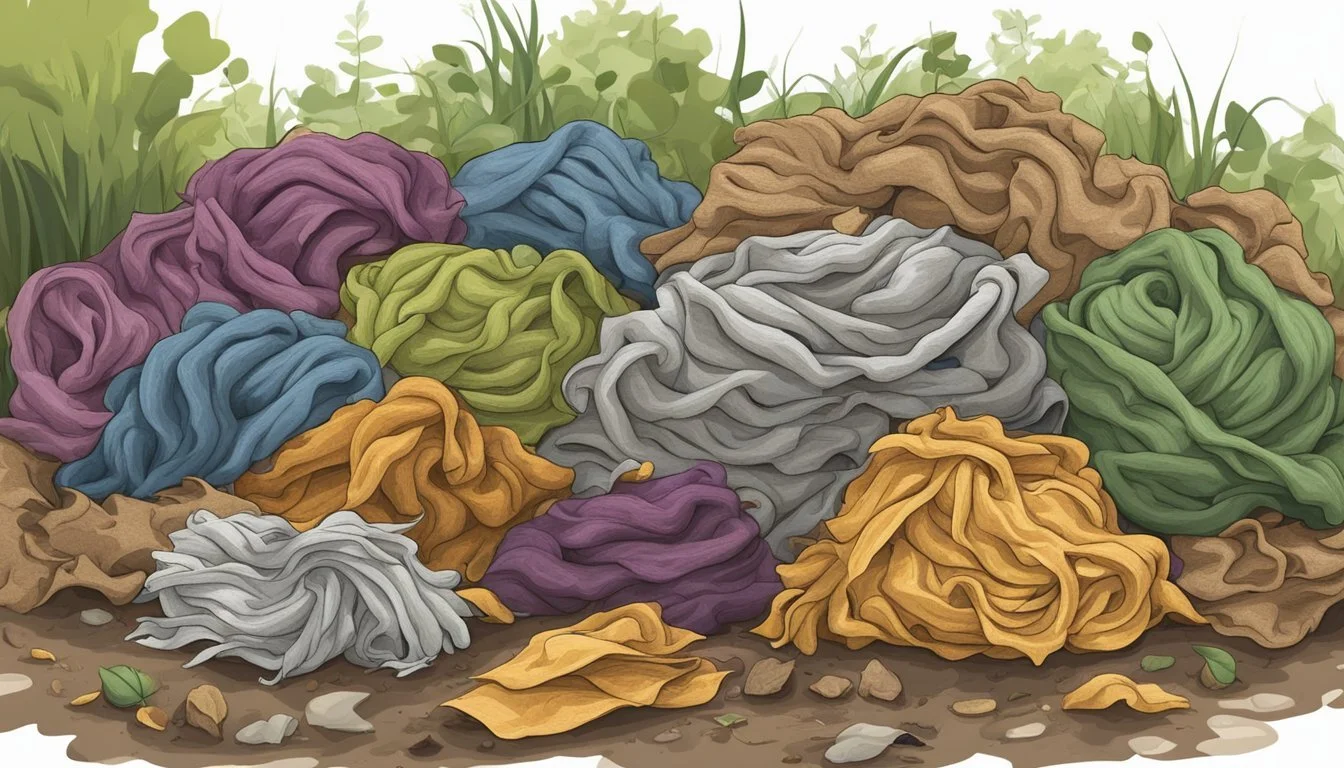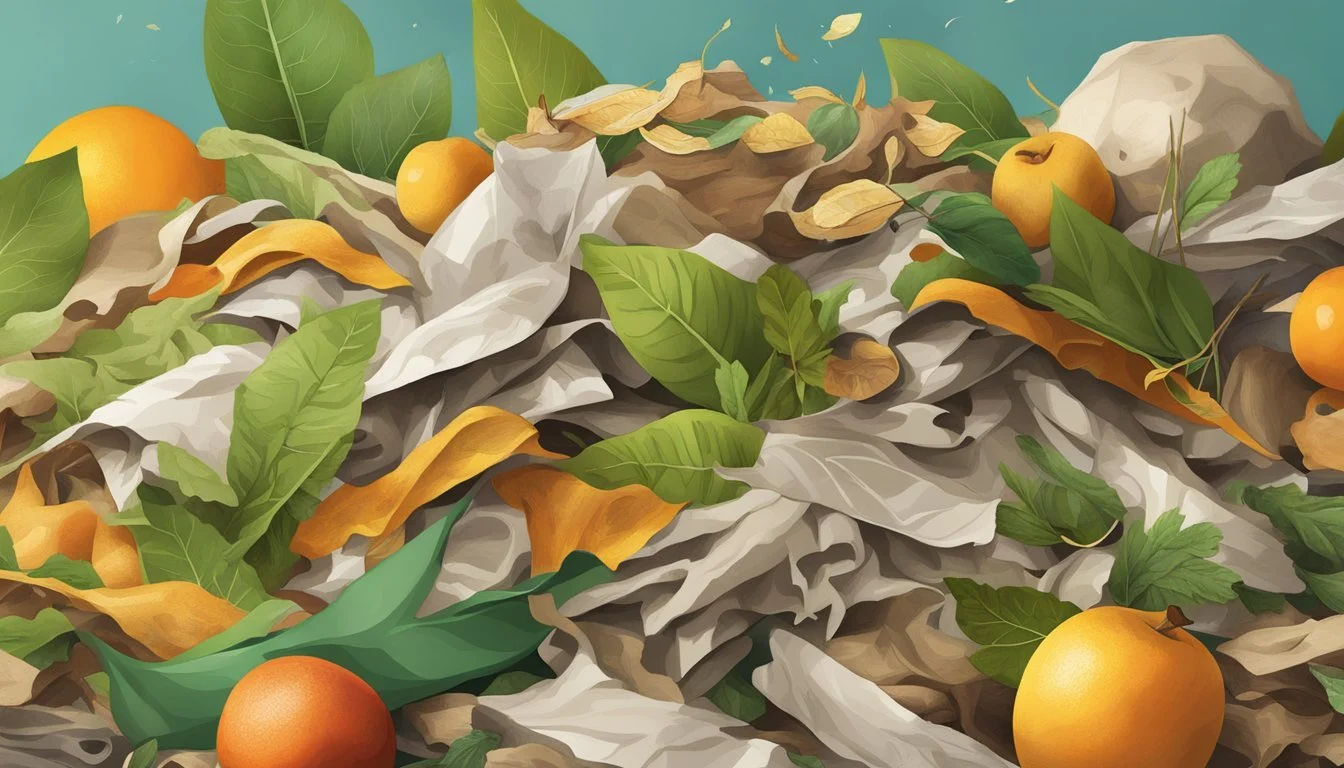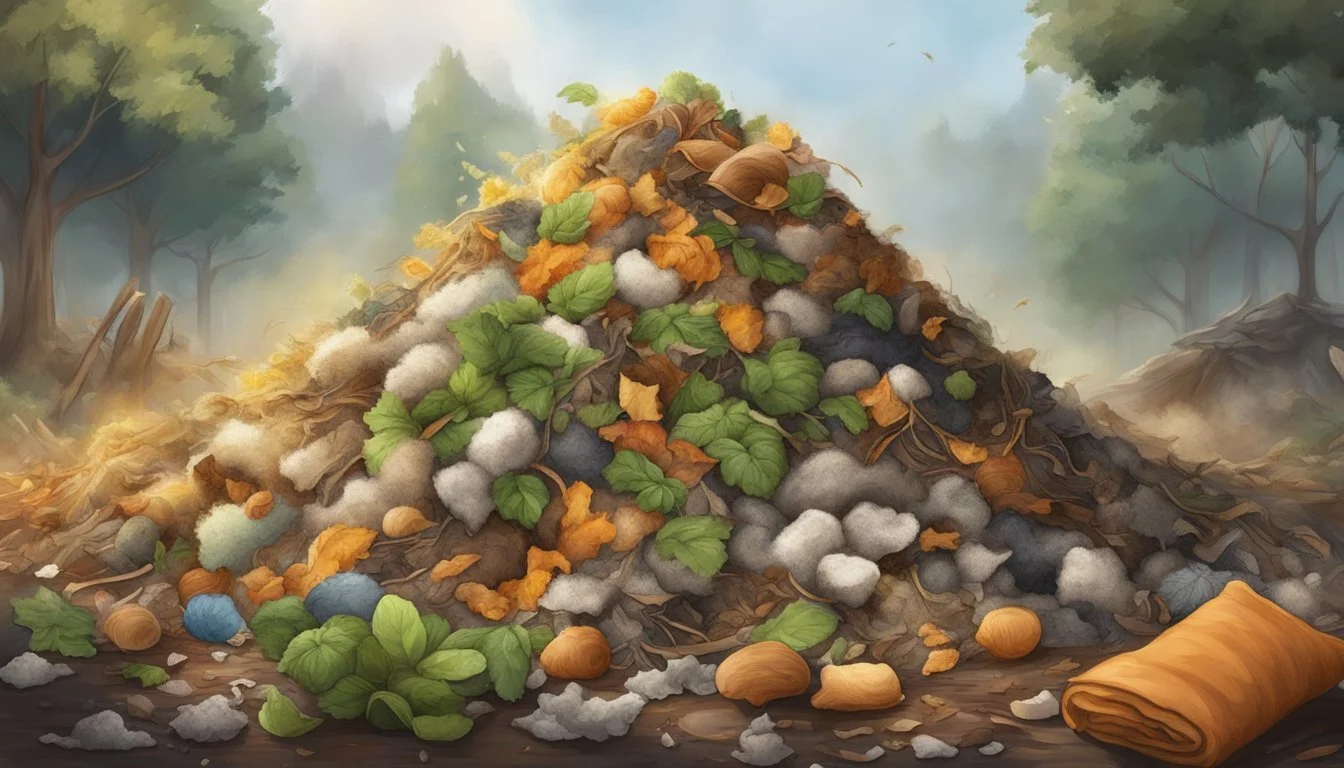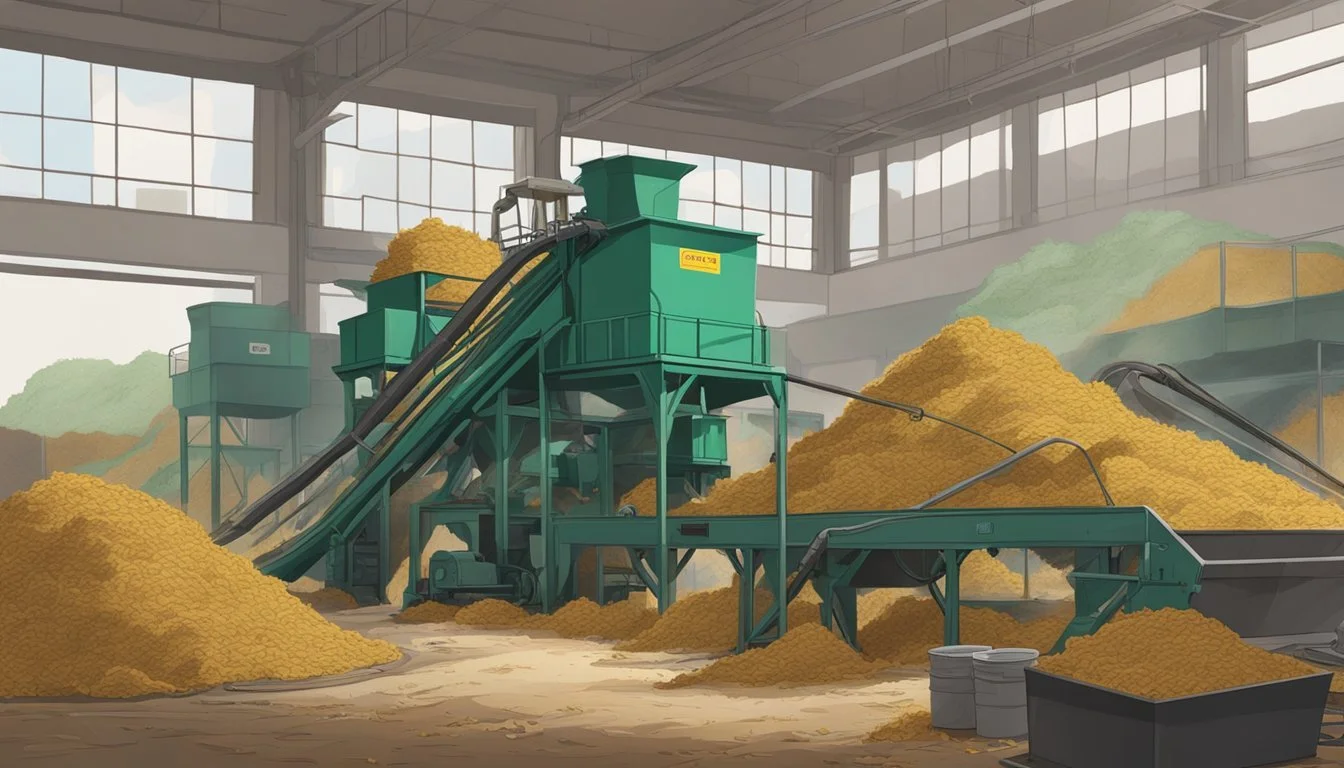Can You Compost Wool Rags?
Understanding Biodegradable Textile Disposal
Wool rags can indeed be composted, as wool is a natural fiber that biodegrades over time. Composting wool rags is an eco-friendly way to repurpose textiles that might otherwise end up in landfills. In a compost pile, wool acts as a brown material, adding carbon to the mix which is essential for the composting process. It's important to shred or cut wool rags into smaller pieces to expedite their breakdown, as wool is quite durable and takes longer to decompose compared to other organic waste.
When introducing wool into compost, it's crucial to ensure it hasn't been treated with chemicals that could be harmful to the compost pile's ecosystem. Untreated, natural wool can be broken down by microorganisms in a composting environment, releasing nutrients back into the soil. The process not only diverts waste from landfills but also creates a valuable end product that can improve soil structure and fertility.
Composting wool rags is a clear and straightforward practice that aligns with sustainable waste management principles. It's advantageous for gardeners and environmental enthusiasts looking to reduce their carbon footprint while contributing positively to the life cycle of natural fibers. By following the proper methods, composting wool can be an efficient part of managing household waste in an eco-friendly way.
Understanding Wool as a Compostable Material
Wool is recognized for its compostable properties, offering a natural means to enhance soil quality by decomposing and releasing valuable nutrients.
Properties of Wool
Wool is a protein fiber derived from sheep and other animals. It is inherently rich in nitrogen, which is a critical nutrient for composting processes and subsequent plant growth. As an organic matter, wool has the ability to break down over time, making it biodegradable.
Nitrogen Content: Wool typically has a high nitrogen content, which serves as a source of slow-release nitrogen when composted. This is particularly beneficial in compost as nitrogen is one of the key nutrients required for the growth of microorganisms that break down organic matter in compost piles.
Carbon-to-Nitrogen Ratio (C Ratio): In composting, the balance of carbon to nitrogen is crucial. Wool has a moderate-to-high C ratio, which can help maintain the necessary balance between carbon-rich 'browns' and nitrogen-rich 'greens' in a compost mix.
Biodegradability: The structure of wool fibers means they break down naturally over time when exposed to the soil's microorganisms and enzymes.
By incorporating wool into compost, one uses a renewable resource to provide soil with long-term nutritional benefits and improved organic content.
Benefits of Wool in Composting
Wool rags, when added to a compost heap, contribute to soil health by releasing valuable nutrients and enhancing physical soil properties. This makes wool an asset for the discerning gardener aiming for a fertile and sustainable garden.
Nutrient Release
Wool is a natural source of nitrogen, an essential nutrient for plant growth. As wool rags decompose in a compost setting, they gradually release nitrogen and other trace elements into the soil. Such a slow-release process ensures that plants receive a steady supply of nutrients over time, which is crucial for their sustained growth.
Soil Aeration
In compost, the structure of wool rags can create small air pockets, which helps to improve soil aeration. Good airflow is critical to the composting process, helping to stimulate the activity of aerobic microbes that decompose organic material. This aeration also prevents the compost from becoming overly dense and soggy, creating a more favorable environment for decomposition.
Water Retention
Wool has an inherent ability to retain water, which is beneficial in maintaining moisture levels within the compost pile. A wool-enhanced compost can hold onto water more effectively, providing a more consistent moisture supply to the soil and plants. This quality is particularly valuable in arid climates or during dry seasons, where water conservation is key.
Pest Repellence
Some studies suggest that using wool in compost can have the added benefit of deterring pests due to the presence of lanolin and other natural oils found in wool. This can lead to a healthier garden with reduced reliance on chemical pest control methods, aligning with environmentally friendly gardening practices.
The Composting Process
The composting process is ultimately a biological activity where microorganisms break down organic materials into more stable compounds. Specific stages of decomposition, temperature, and moisture control, as well as aeration, are crucial to efficiently compost wool rags.
Stages of Decomposition
Composting occurs in phases starting with the initial mesophilic stage, where bacteria thrive at moderate temperatures, breaking down soluble, readily available compounds. The process then shifts to the thermophilic stage, characterized by higher temperatures that accelerate decomposition and eliminate pathogens. Finally, the cooling and maturation phases allow diverse organisms to further break down the material into humus.
Temperature and Moisture Control
Temperature is critical in composting; it indicates the activity level of microorganisms. Temperatures should ideally be between 49–77°C (120–170°F) to promote rapid decomposition and pathogen elimination. Moisture level is equally vital; compost should be kept moist but not waterlogged, aiming for a moisture content of 40-60%. This balance supports bacteria and other microorganisms without creating anaerobic conditions.
Aeration and Turning
Oxygen is essential for aerobic bacteria to thrive and break down organic materials efficiently. An aerated environment can be maintained by turning the compost pile regularly, which helps manage temperature and distributes moisture evenly. A lack of oxygen can lead to a slower composting process and generate unpleasant odors.
Suitable Compost Ingredients
Composting is a natural process of recycling organic material like leaves and vegetable scraps into a rich soil amendment that gardeners fondly nickname "Black Gold." Understanding the balance between green and brown materials is crucial for a successful compost bin.
Green and Brown Materials
Green materials are rich in nitrogen and are essential for compost heat generation. These include:
Grass clippings: They are quick to decompose and add necessary nitrogen.
Coffee grounds: A good nitrogen source that also introduces microorganisms to the compost pile.
Vegetable scraps: An ideal addition that breaks down quickly.
Brown materials, on the other hand, are high in carbon and help to create the necessary bulk and air pockets in the compost pile. Important brown materials are:
Leaves: They break down over time and enrich the compost with carbon.
Twigs and straw: These provide structure to the pile, which aids in aerating and should be broken down into smaller pieces for better composting.
Sawdust or paper: Only in moderation, as they can mat down and stifle the pile; they should be void of any chemicals or inks.
The correct balance between these elements should be achieved for optimal composting conditions.
Items to Exclude
Certain items should never be put into a compost bin due to potential health hazards or their inability to break down properly. The following should be excluded:
Meats, oils, dairy products: These can attract pests and create odor problems.
Diseased plants: They can spread pathogens through the compost.
Chemically treated wood or sawdust: Harmful chemicals might leach into the compost and later into the garden soil.
While wool rags can be composted as they are natural fibers, they decompose at a slower rate and should be added in small amounts. It is essential that no synthetic materials are attached to the wool. Organic materials should be the main focus in a compost pile to ensure a clean, nutrient-rich compost.
Composting at Home
Composting at home transforms organic waste from the kitchen and yard into a nutrient-rich soil amendment, leveraging materials such as kitchen scraps, yard trimmings, and shredded newspaper. It can be an efficient way to reduce waste and improve garden health.
Choosing a Compost Bin
A crucial step in home composting is selecting the appropriate compost bin. There are various types of bins ranging from simple open piles to enclosed tumblers. The right choice depends on the available space, the volume of organic material, and the gardener's preference for managing the composting process. Options for homeowners include:
Stationary Bins: Ideal for small to medium-sized gardens; they keep materials contained and promote decomposition.
Tumbling Bins: Suitable for those who prefer a more hands-off approach; tumblers make it easier to aerate the compost by turning the bin.
DIY Bins: Made from repurposed materials like wood pallets or wire mesh; a cost-effective and customizable solution.
Maintaining Your Compost
Proper maintenance is essential for creating high-quality compost. It involves:
Balancing Greens and Browns: A mix of 1/3 nitrogen-rich 'greens' like kitchen waste and 2/3 carbon-rich 'browns' like shredded newspaper and dry leaves is key.
Aerating: Regular turning of the compost ensures oxygenation, preventing foul odors and accelerating the decomposition process.
Moisture Control: The compost should be kept as damp as a wrung-out sponge. If it's too dry, microbial activity slows; too wet, and oxygen is limited, leading to anaerobic conditions.
By considering the variety of compost bins and attending to the balance of materials, aeration, and moisture, homeowners can efficiently compost organic waste, including wool rags, to enhance their garden soil's health.
Using Wool Compost in the Garden
Wool compost is an excellent resource for gardeners, offering mulch and fertilizer options that support plant health and productivity in the garden. It contributes to moisture retention and provides essential nutrients over time.
As Mulch
Gardeners can enhance their garden beds by using wool compost as mulch. The natural properties of wool allow it to:
Retain moisture: Wool fibers absorb and slowly release water, reducing the need for frequent watering.
Regulate soil temperature: Wool provides insulation that helps protect plants from temperature fluctuations.
Control weeds: A layer of wool mulch can suppress weed growth and minimize garden maintenance efforts.
Using wool as mulch can be particularly beneficial around fruit-bearing plants, where consistent moisture levels can improve fruit yield and quality.
As Fertilizer
As a fertilizer:
Nutrient-rich: Wool compost gradually releases nitrogen and other trace elements essential for plant growth.
Soil structure: Incorporating wool into the soil can improve its structure, promoting better root growth and enhancing soil fertility.
For gardeners looking to nourish their plants with an eco-friendly option, wool compost serves as a robust alternative, fostering a thriving garden environment.
Environmental Impact of Composting Wool
Composting wool rags is a sustainable practice that significantly reduces waste and conserves resources, contributing positively to sustainability efforts.
Waste Reduction
Composting wool rags directly alleviates the burden on landfills. Wool, being an organic waste, breaks down into nutrient-rich compost, thus diverting it from the waste stream. The benefits are twofold: it minimizes the environmental impact associated with landfill use, such as methane emissions, and it transforms a potential waste product into a beneficial resource.
Organic waste decomposition in landfills: Slow & produces methane.
Wool composting: Reduces organic waste in landfills & cuts down methane production.
Resource Conservation
Composting wool rags is a cornerstone of resource conservation. It exemplifies recycling in its purest form, converting discarded wool into a sustainable soil amendment. This process not only conserves the environment by reducing the need for chemical fertilizers but also capitalizes on wool's inherent nitrogen content to enrich soils naturally.
Chemical fertilizer replacement: Wool compost releases slow-release nitrogen, reducing the need for synthetic options.
Renewable resource: Wool is a renewable resource, and its composting continues the cycle of sustainability.
Troubleshooting Common Composting Issues
In composting, maintaining the right conditions is essential for efficient decomposition without attracting pests or producing unwanted odors. Here are specific strategies for addressing common issues in compost piles.
Odor Control
If a compost pile begins to emit foul odors, it is typically a sign of imbalance in the carbon-to-nitrogen ratio or lack of airflow. To remedy this, one should:
Ensure aerobic conditions by turning the pile regularly, promoting oxygen circulation.
Adjust the C/N ratio by adding more brown materials such as leaves or straw if the pile is too wet and smells of ammonia, or green materials like fruit and vegetable scraps if the pile smells like rotting.
Pest Management
Pests such as rodents or insects are attracted to compost piles for food and shelter. Pest management involves:
Excluding meat, dairy, and cooked food waste from the compost to avoid attracting pests.
Using a bin with a secure lid to deter animals.
Regularly turning the compost to disrupt any potential nesting.
Avoiding diseased, insect-ridden plants, and weeds that might harbor pests or lead to infestations.
Moisture Balance
A compost pile's moisture level is crucial for the survival of the microorganisms that break down the waste. To maintain balance:
Keep the compost pile as moist as a wrung-out sponge. If it is too wet, add brown materials; if too dry, add green materials or water lightly.
Piles that are too dry slow down the decomposition process, while excessively wet piles may become anaerobic, leading to odors.
Advanced Composting Techniques
Advanced composting techniques broaden the range of materials that can be composted and enhance the decomposition process through specific methods that involve a host of micro-organisms, worms, and bacteria.
Vermicomposting with Wool
Vermicomposting is a highly efficient method of composting that involves the use of special earthworms known as red wigglers (Eisenia fetida). These worms have the remarkable capability to consume their own weight in organic matter daily. When incorporating wool rags into a vermicomposting system, they must be cut into small pieces to ensure that the earthworms can break them down effectively. The presence of wool provides a source of slow-release nitrogen and retains moisture, which aids the micro-organisms involved in the composting process.
Bokashi Fermentation
Bokashi fermentation is an anaerobic composting technique that utilizes beneficial bacteria to ferment organic waste, including traditionally challenging items like cooked food, meat, dairy, and wool. Materials are placed in a sealed container with a bran-based inoculant, where they undergo fermentation. This pre-composting step generates a rich substrate, which, after fermentation, can be introduced into a conventional compost pile or buried directly in the soil to complete the decomposition process, effectively enriching it with micro-organisms that further break down the waste.
Wool in Large-Scale Composting Operations
Wool rags from sheep processing in the textile and meat industries are increasingly recognized as valuable organic waste for large-scale composting operations due to their high nitrogen content.
Industrial Composting Systems
Industrial composting systems are equipped to handle large volumes of organic waste through mechanisms that promote aerobic decomposition. Wool, introduced as a component of the composting material, contributes to the nutrient pool with its significant nitrogen content, estimated to be around 10-11%. Key factors in the composting process include moisture control, temperature management, and regular turning, ensuring rapid biodegradation. The facilities also ensure the proper handling of potential contaminants such as meat and bones, which may accompany wool rags from sheep.
Nitrogen content: 10-11%
Decomposition requirement: aerobic biological process
Contaminant handling: meat and bones
Agricultural Application
In an agricultural context, composted wool products enhance soil quality by slowly releasing nitrogen, an essential nutrient for plant growth. When applied to fields, sheep wool compost, combined with other organic matter like manure, can improve the soil's structure and water retention. This synergy creates a robust system for sustainable agriculture and represents a circular approach where waste is transformed into a useful product to support crop production.
Benefit to soil: improved structure and water retention
Nutrient released: nitrogen
Source materials: wool rags, manure











